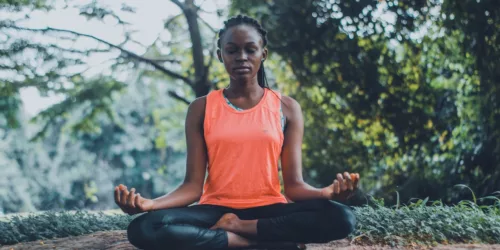Embracing Mindfulness in Sound-Deprived Spaces
In our fast-paced and overstimulated world, finding moments of tranquility and inner peace can be challenging. Mindfulness practices and meditation techniques have long been heralded as powerful tools to quiet the mind, reduce stress, and connect with our inner selves. But what if there was a way to enhance this practice, taking it to a whole new level of serenity and self-discovery?
Enter sensory deprivation tanks, also known as floatation tanks or isolation tanks – a unique and immersive experience that has been gaining popularity among those seeking to deepen their meditation practice. By reducing external distractions and immersing oneself in a sound-deprived environment, individuals can enhance their focus, promote relaxation, and explore a heightened state of sensory awareness.
Imagine entering a serene space, free from the noise and chaos of the outside world. Close your eyes and let the stillness envelop you. As you float effortlessly in warm, buoyant water, your mind begins to quieten, allowing for a deeper connection with your thoughts and emotions.
Key Takeaways:
- Mindfulness in sound-deprived environments can help reduce stress and promote relaxation.
- Sensory deprivation tanks provide a unique and immersive experience for exploring a heightened state of sensory awareness.
- Reducing external distractions can enhance focus and deepen meditation practices.
- Embracing moments of silence can foster mental clarity and peace.
- Exploring mindfulness practices and techniques can lead to self-discovery and improved well-being.
The Power of Silence
Silence is not merely the absence of noise but a presence that can have a profound impact on our mental well-being. In today’s fast-paced and noisy world, finding moments of quiet and stillness can be a challenge. However, embracing mindfulness in sound-deprived environments can offer a multitude of benefits for our overall health and happiness.
Reducing external distractions and immersing ourselves in silence can enhance our focus, promote relaxation, and improve our ability to connect with ourselves on a deeper level. By stepping away from the constant barrage of stimuli, we create a space that allows for heightened sensory awareness and increased self-awareness. This heightened state of consciousness can lead to improved concentration, boosted creativity, and a greater sense of inner peace.
The Effects of Noise on Our Well-Being
Excessive noise can negatively impact both our physical and mental health. Studies have shown that constant exposure to noise can increase stress levels, disrupt sleep patterns, and even contribute to the development of cardiovascular diseases. Additionally, noise pollution can hinder our ability to concentrate, decreasing productivity and impairing cognitive function.
Noise is not just a nuisance; it can be detrimental to our well-being. By embracing silence in sound-deprived environments, we give ourselves the opportunity to find tranquility and restore our mental balance.
Benefits of Mindfulness in Sound-Deprived Environments
By intentionally seeking out moments of silence and reducing external auditory distractions, we open ourselves up to a range of positive effects on our overall well-being:
- Enhanced focus: Silence allows us to direct our attention inward, sharpening our focus and improving our ability to concentrate on the task at hand.
- Promotion of relaxation: The absence of noise can induce a state of relaxation, calms the nervous system, and reduces tension and anxiety.
- Heightened sensory awareness: In silence, our senses become more attuned and receptive, allowing us to fully experience the world around us in all its subtleties.
- Increased self-awareness: Through the practice of mindfulness in sound-deprived environments, we develop a deeper understanding of ourselves, our thoughts, and our emotions.
- Improved concentration: By eliminating external distractions, we create an environment that supports deep focus and improved cognitive performance.
- Boosted creativity: With a clear and tranquil mind, we tap into our innate creativity, allowing new ideas to flow freely.
Creating Silence in Everyday Life
While it may be challenging to find complete silence in our daily lives, we can incorporate practices that help us cultivate moments of stillness and embrace mindfulness in our sound-filled environments:
- Meditation: Set aside dedicated time for meditation, finding a quiet space where you can disconnect from external distractions and focus on your breath and present moment awareness.
- Turn off the noise: Take breaks from electronic devices and turn off notifications to reduce noise pollution and create a peaceful environment.
- Immerse in nature: Spend time outdoors in quiet natural surroundings, such as parks or forests, to recharge and reconnect with the soothing sounds of nature.
- Practice deep listening: Engage in mindful listening exercises where you pay attention to the sounds around you, without judgment or analysis.
| Mindfulness in Sound-Deprived Environments | Benefits |
|---|---|
| Reduced external distractions | Enhanced focus and concentration |
| Promotion of relaxation | Reduced stress and anxiety |
| Heightened sensory awareness | Increased self-awareness and connection with the present moment |
| Boosted creativity and enhanced cognitive function |
Cultivating Mindfulness
Incorporating mindfulness practices into our daily lives can have a profound impact on our mental well-being. It doesn’t require a drastic overhaul of our lifestyle; simple changes can make a big difference.
One way to cultivate mindfulness is by starting each day with positive intentions and practicing gratitude. By setting the tone for the day, we can approach it with a sense of purpose and appreciation.
Mindful eating is another powerful practice that can bring us closer to the present moment. By eliminating distractions and savoring each bite, we can fully experience the flavors, textures, and nourishment that our meals provide.
Our digital devices can often be a source of stress and anxiety. Taking breaks from technology and limiting screen time allows us to disconnect and recharge. It’s important to create space for quiet reflection and inner peace.
Connecting with nature is a wonderful way to restore balance and find serenity. Spending time outdoors, surrounded by the beauty of the natural world, can have a soothing and calming effect on our minds and bodies.
Mindful breathing is a simple yet powerful technique to activate the body’s relaxation response and reduce anxiety. By focusing on our breath and taking slow, deep breaths, we can bring ourselves into the present moment and find a sense of calm.
Art therapy provides a creative outlet for self-expression and emotional well-being. Engaging in artistic activities like painting, drawing, or writing can help us process our emotions, promote self-discovery, and foster a sense of inner connection.
Laughter yoga is a playful and uplifting practice that combines laughter exercises with deep breathing. It not only boosts our mood but also promotes physical and emotional well-being.
Sensory mindfulness is all about heightening our awareness through our senses. By paying attention to the touch, smell, taste, sight, and sound of our surroundings, we can fully immerse ourselves in the present moment.
Floatation therapy offers a unique experience of weightlessness and relaxation. By immersing ourselves in a sensory deprivation tank, we can let go of external stimuli and float effortlessly, allowing our bodies and minds to enter a state of deep relaxation and tranquility.
Finally, incorporating mindful movement practices such as tai chi or qigong can help us find balance, harmony, and calmness. These gentle and deliberate movements not only promote physical well-being but also cultivate a sense of mindfulness and presence.
FAQ
How can mindfulness practices benefit me in sound-deprived environments?
Mindfulness practices can help reduce external distractions, enhance focus, and promote relaxation in sound-deprived environments. By heightening your sensory awareness and reducing the impact of noise, you can experience a deeper sense of tranquility and connect with your inner self.
What are some meditation techniques for mindful listening?
Mindful listening involves paying attention to the sounds around you without judgment or attachment. Some meditation techniques for mindful listening include focusing on the rhythm of your breath, tuning in to the present moment, and allowing sounds to come and go without getting caught up in them.
How does sensory isolation in floatation tanks enhance mindfulness practices?
Sensory isolation in floatation tanks creates a sound-deprived environment that allows for quiet contemplation and deep relaxation. By removing external distractions and immersing yourself in weightlessness, you can enhance your mindfulness practice and experience heightened self-awareness.
Can mindfulness practices improve concentration and creativity?
Yes, mindfulness practices have been shown to improve concentration and boost creativity. By reducing external distractions and cultivating a present-moment focus, mindfulness allows your mind to calm and your thoughts to flow more freely, enhancing both concentration and creative thinking.
How can I incorporate mindfulness into my daily life?
There are several ways to incorporate mindfulness into your daily life. You can begin each day mindfully by setting positive intentions and practicing gratitude. Transform mealtime into a mindful experience by eliminating distractions and savoring each bite. Limit screen time and take breaks from technology to reduce stress and anxiety. Connect with nature to experience its soothing and calming effects. Practice mindful breathing to activate the body’s relaxation response and reduce anxiety. Engage in art therapy to express emotions and promote self-discovery. Explore laughter yoga for a unique and uplifting practice that boosts mood. Practice sensory mindfulness to heighten awareness through touch, smell, taste, sight, and sound. Consider floatation therapy for a unique experience of weightlessness and relaxation. And finally, incorporate mindful movement such as tai chi or qigong for balance, harmony, and calmness.
Source Links
- https://www.float-therapy.co.uk/post/embrace-stillness-exploring-the-transformative-power-of-sensory-deprivation-tanks-for-meditation
- https://www.nathab.com/blog/hearing-the-sound-of-silence/
- https://wellbeing.nashsquared.com/videos/embracing-mindfulness-cultivating-good-mental-health-in-the-new-year






